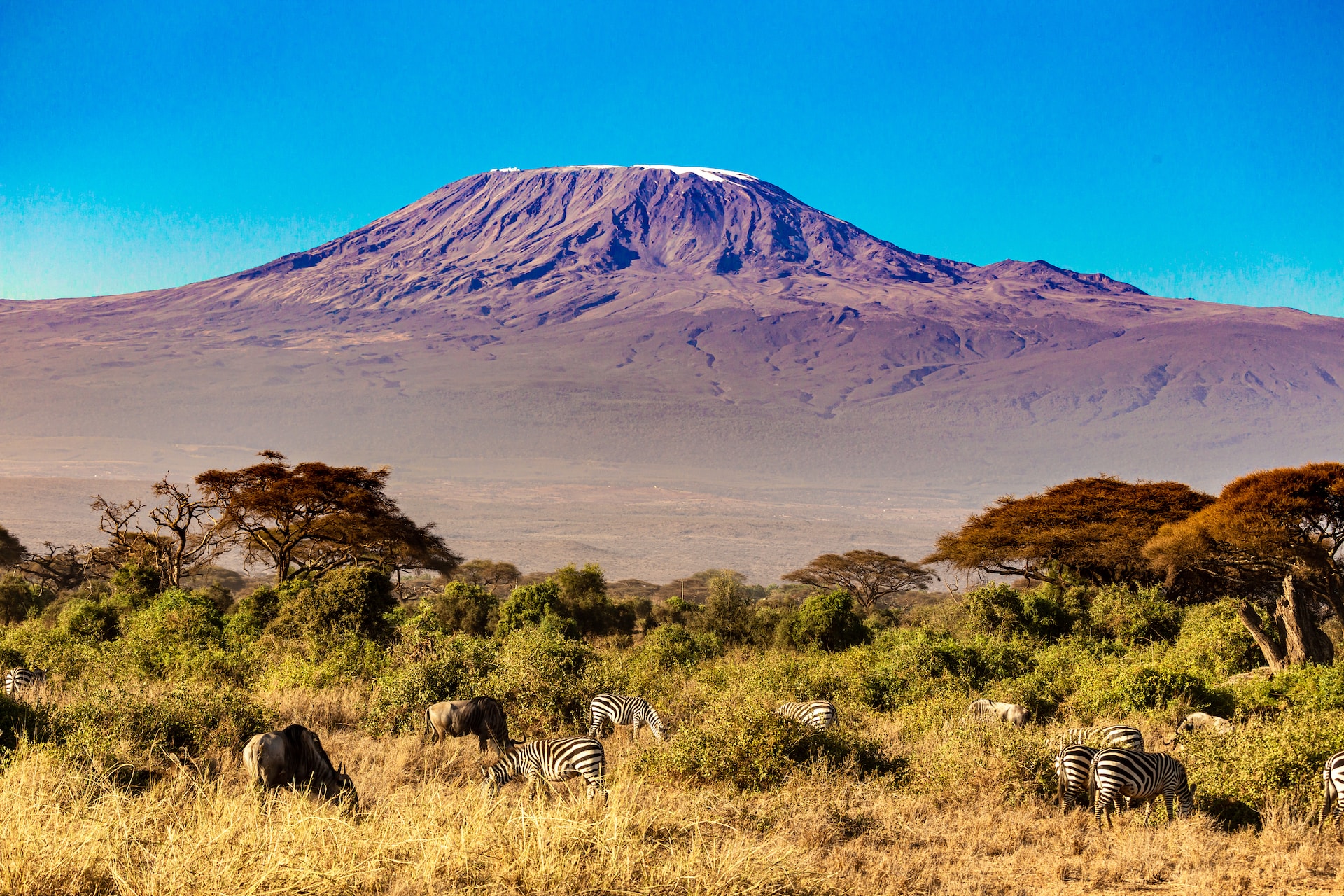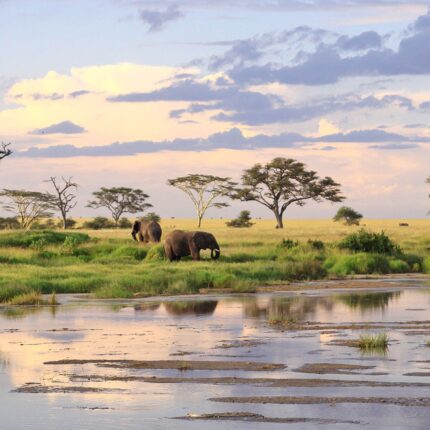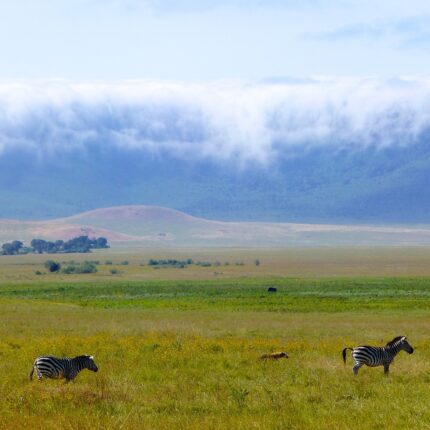Climbing Mount Kilimanjaro is a popular tourist attraction. This trekking adventure is a fantastic destination for people from all over the world because it mixes the exhilarating experience of “conquering” one of the Seven Summits with the achievement of something exceptional. The Mountain is part of the Greater Kilimanjaro National Park
Climbing Mount Kilimanjaro – Machame Route
Machame route is one of the most picturesque and accessible trailheads after Marangu, ranking second only to Marangu.
Those who have climbed it give it high marks. Climbers are believed to be unaware of their popularity until they reach their peak.
Day 1: Arrival
When you arrive at Kilimanjaro International Airport, you will be welcomed and taken to Moshi town for hotel check-in and a briefing for the next day’s climb.
Day 2: Machame Camp – Climbing Mount Kilimanjaro
After breakfast, check out of your accommodation and travel to the Machame gate to register for the climb. After passing through the Machame gate, hike for about 2-3 hours through a lush forest of fig and rubber trees, as well as other tropical plants.
You will pause for lunch halfway through the programme. As the environment changes to tall grasses and gigantic heather, continues rising. Depending on your hiking speed, you might arrive at the camp between 5 and 6 p.m. This stage is quite simple and enjoyable. There’s no need to rush at this point; instead, spend your time admiring the jungle.
Day 3: Shira Camp
Wake up as early as 6 a.m. and have a nice cup of tea or coffee while admiring the stunning vista of Uhuru Peak. You’ll be walking through a haunting terrain of volcanic lava, tunnels, and streams. Lunch will be provided around 2-4 hours after leaving Shira Camp.
The next camp is roughly 6 hours away, and you’ll arrive about 2-3 pm.
In the event of altitude sickness, guides will always urge you to drink plenty of water and sleep plenty. You will relax and eat at Shira Camp today.
Day 4: Barranco Camp
After breakfast, begin the descent to Barranco camp by crossing the Bastains creek. You will see waterfalls along the road that are fed by mountain streams. The trip today will take around 6 hours, and we will arrive at camp between 4:30 and 5:30 pm. Barranco Camp provides lodging and meals.
Day 5: Barafu
The hike to Barafu offers an exciting stunning view of Mawenzi mountain on the right, while Kibo can be seen in the distance ahead. Lunch will be given halfway to the camp, as is customary.
The following day is the longest of all, therefore most guides recommend retiring early tonight. Dinner and overnight at Barafu Camp.
Day 6: Summit
After a small meal, get up around midnight and start climbing at 3 a.m.
The ascent becomes more difficult here. Many of us here begin to experience altitude sickness in some sort. Temperatures will dip to between -4 and 5 degrees Fahrenheit. Before reaching the crater, you’ll have to hike for roughly 6 hours.
One more ascent will take you to the crater. Uhuru Peak, at 19,340 feet, is the highest point on the African continent. Because the crater’s edge is rough and cold, you must closely follow your guide during this portion of the tour.
Day 7: Descend
After breakfast, return to Mweka gate to sign your name and obtain your summit certificate. Climbers who reach Stella Point receive a green certificate, while those who reach Uhuru Peak earn a gold certificate.
After the certificate is presented, your driver and guide will greet you and transport you to the hotel for relaxation.
Day 8: Departure
After breakfast, you will be driven to Kilimanjaro International Airport to catch your trip home.
Climbing Mount Kilimanjaro – Rongai Route
The highlight of the Rongai Route: This route is less congested than Machame and Marangu. This is the simplest route, according to experienced guides and climbers.
Day 1: Arrival
When you arrive at Kilimanjaro International Airport, you will be greeted and taken to your hotel for a briefing on the next day’s climb.
Day 2: First Cave Camp
After breakfast, you will be picked up and driven to Marangu Gate for registration and procedures. Following that, you will be moved to Rongai Camp.
Day 3: Kikelewa Caves
After breakfast, begin the ascent to the cave with exciting spectacular views of the Eastern ice fields on the crater rim. You will travel for around 6–7 hours till you get to Kikelewa caverns, where we will have food and relax.
Day 4: Mawenzi Tarn camp
A short but tough trek up grassy hills after breakfast is rewarded by a magnificent physical feeling of nature. As you approach the next camp at Mawenzi, you will begin to leave the jungle behind ( 4,330m).
Spend the afternoon exploring the surroundings. It takes roughly 3-5 hours to walk to camp.
Day 5: Kibo
Today we go over the desert between Mawenzi and Kibo to the school campsite (4,750 m.) at the base of the Kibo crater wall. We’ll walk for roughly 4-5 hours before arriving at the campsite. The rest of the day is spent relaxing before the last ascent.
Day 6: Summit
After a short breakfast, we set off at 1 a.m. to reach Gillman’s Point (5685 m) in time for daybreak. This is the most difficult four hours of the whole climb. You will then proceed for another 2 hours to Uhuru Peak, Africa’s highest point (5895 m).
Descend to Kibo camp for a nice lunch before continuing to Horombo Hut. Horombo Camp provides meals and lodging.
Day 7: Descent
You will return to the Marangu gate to sign and hand over certificates to successful climbers. Those who reach Gillman’s point get green certificates, while those who reach Uhuru peak get gold certificates.
Following the presentation of the certificate, your driver and guide will be waiting to take you to your accommodation.




